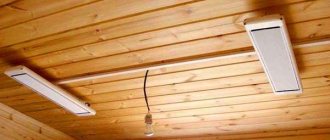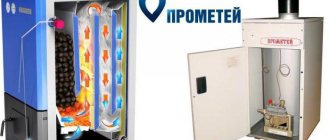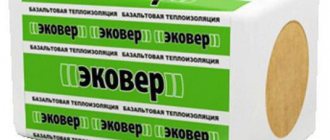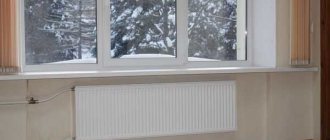Convective infrared heaters have recently appeared on the heating market, but this does not make them less popular.
The onset of cold weather makes you think about buying effective devices for heating the room if the main heating system is a little less than ideal. Mobile heat devices will do.
About the equipment, the operation of which is based on convection, IR radiation, is described in the article.

Interior
Historical reference
Situations often arise when the installation of additional heating equipment is necessary. For example, when the heating system is not powerful enough to heat the room, or it is cold winter outside the window.
Many are trying to make homemade devices. Previously, the simplest fan heaters were used, in some houses the devices were preserved, called in the common people "goats".
With the onset of the 90s of the last century, electric convectors began to appear on the shelves. The production of these devices was carried out abroad, the equipment was expensive.
The devices were hung on the wall. The device is easy to operate, does not consume a lot of electricity.
Convective, convective - infrared, infrared designs have appeared on the market. The devices are even more economical, compact, and simple.
Kovalenko Pavel
I bought Timberk TCH A2 1100 for my dacha while the fireplace is not completed. Saves even in early winter and late autumn. The room heats up very quickly, literally in a matter of minutes it becomes warm. It was by this criterion that I selected an infrared heater, it is very convenient for a summer residence that does not work all the time; by the way, in some reviews I saw that he heats the room in 2 minutes, did not detect it, but the speed pleases.
By the way, the device should be bought with a remote control. I hung it from the ceiling - very comfortable, but getting it on / off every time would be inconvenient. The lack of a remote control kit is of course a disadvantage, since the manufacturer himself recommends a wall or ceiling for fixing.
Before buying, I looked through user reviews for these infrared heaters, so I prepared for the smell in advance. The first time I turned it on when it was still not very cold outside, so it was possible to ventilate. It smelled, of course, pretty much, the "aroma" disappeared after a couple of days. Also a nuisance, albeit bearable. As far as I remember, most heaters emit a smell until the factory grease burns out. A normal infrared heater for a summer residence, everyone who was with us had positive reviews. It is very comfortable to jump into the warm from a cold street.
(Timberk TCH A2 1100)
Overview of varieties
Types of heating devices:
- Fan heaters. Placed on the floor. The work consists in blowing heat around the room with a fan located behind the heating elements. At the same time, the fan and the heating element are turned on, as the temperature rises by the heater, the air becomes hotter. Heating the room is faster than many other devices.
- Oil radiator. The heat carrier is mineral oil. Devices differ in power, content, dimensions. The equipment heats up for half an hour, the thermal relay is triggered, the system turns off. Necessary for security reasons. Oil radiators are panel, sectional.
- Heat gun. Structures differ in purpose: industrial, household. The main task is to heat a large area - a garage, a utility building. Heat guns are expensive.
- Thermal curtain. The main installation location is above the doorway. The device is capable of heating small rooms.The task of the heat curtain is to prevent cold air from entering the room. The device is relevant for rooms where the door faces the street, cold air masses constantly come in.
- Convector.
- IR heater.
Natalia Grigorieva
An excellent solution to the office! Heating in winter is weak, our system is old, it is problematic to sit out all day. After using it throughout the season, no questions or difficulties arose. Excellent infrared heater for office or home, good price and super-quality, excellent equipment, reviewed reviews did not disappoint.
When used, a pleasant warmth is felt on the hands. The main thing is that it heats up quickly, that is, you come to a cold office in the morning, turn it on, and it becomes warm almost immediately. At first, we considered convectors and infrared heaters, but the reviews on the first ones confirmed that it takes a long time for even a small room to warm up.
I heard that some users complain about smell and sounds. I don’t know, but as for me, this is not critical. Still, not a bedroom, but a working room, so very few people notice them at all. By the way, for infrared heaters of this type, crackling is considered a norm, which, according to experts, is due to the design. And the smell appeared when you first turned on, but after a normal warm-up for a day, it disappeared.
Pros:
- price;
- heats up quickly;
- good equipment of the device (everything you need for installation and use).
I have not found any minuses yet. As a result, this is an excellent device for its very little money, which normally performs its tasks. I recommend.
(Timberk TCH A1N 700)
Electric convectors
The electric convector resembles an ordinary radiator. Operates from the mains, does not have a supply for the coolant.
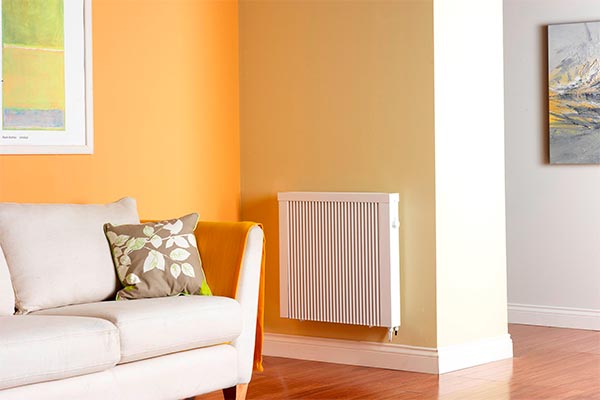

Electric convector
The convector works off-line. There is no need to lay pipes for the coolant, an electric boiler, an expansion tank - something that requires water heating. The convector heats up the air and creates continuous circulation. The heat is evenly distributed throughout the room.
The advantages of electric convectors:
- Thanks to natural air circulation (convection), the maximum heating effect of the room is achieved.
- The device is compact, can be carried, put away for the summer.
- The device can briefly replace the main heating in the event of a shutdown.
- The electric convector does not affect the microclimate in the house, does not dry the air.
Among the minuses, I would like to note the following:
- Together with the convection of warm air, the dust being lifted up is distributed.
- High electricity costs.
Features of the convectors
Electric convectors get their name from the physical phenomenon of convection, in which heat transfer occurs due to the transfer of heat from a warmer body to a body with a lower temperature. In this case, these electrical devices transfer their thermal energy directly to the air of the room in which they are located. In this case, the heated air masses rise up, after which they cool and go down.
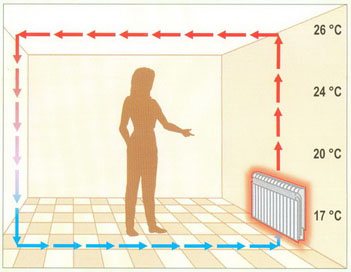

With convective heating, the air above is always much warmer than below
Thus, air layers with different temperatures are mixed and uniform heating of the entire air space of the room is ensured.
Despite the numerous advantages, the main disadvantage of convector heating is the high thermal inertia, therefore, the comfortable use of such equipment requires constant switching on.
IR heaters
They differ in the principle of operation. IR rays do not heat the air, but objects - floors, walls, furniture. Objects give off heat to the room. The principle of operation is very similar to the sun's rays.
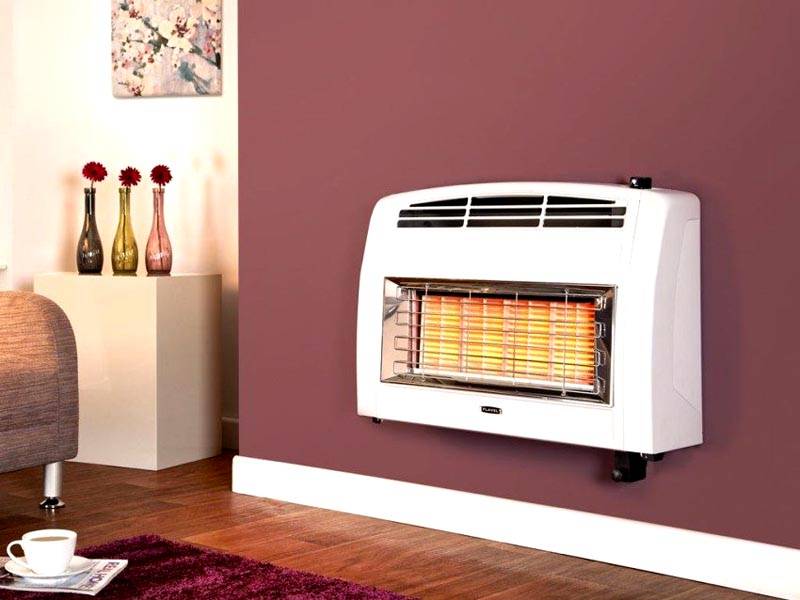

IR equipment
Maybe:
- Improving the quality of space heating.
- Reducing energy consumption.
- Reducing heat losses.
- Uniform heating of the room.
If you compare the device with a conventional convector, the efficiency of the IR emitter is higher. The first option heats up the air, which, having reached the ceiling, lowers the temperature by several degrees. The higher the ceiling height, the greater the difference between the air at the floor and at the top of the ceiling. An infrared heater heats objects, reducing heat loss.
Warm air gathers at the top, leaving a cold mass at the bottom, we feel cold feet on our feet.
The principle of operation and criteria for choosing an infrared heating convector for the home
Infrared heaters are modern appliances that work on a principle similar to solar radiation. Such equipment has a lot of advantageous features in comparison with traditional systems. The scope of application of infrared heaters is constantly expanding.
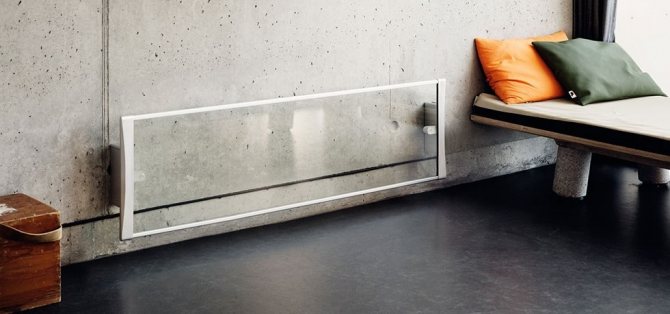

What are electric infrared convectors?
These heating devices are represented by a rectangular panel that resembles a conventional fluorescent lamp. Such a structure is installed in the area of \ u200b \ u200bthe windows or mounted on the ceiling.
What is it for and where is it used?
Infrared heaters are gradually replacing traditional heating systems in summer cottages, private houses and apartments. They are compact and easy to care for. Electricity consumption during the operation of these devices is minimal.
Thanks to these features, infrared heaters have gained wide popularity. The heat generated by the device is beneficial to the human body. It can be placed in the living room, nursery or dining room. Infrared heaters are often bought for heating garages.
Wall, floor and ceiling mounting of infrared heaters is extremely simple.
The devices are environmentally friendly and economical.
In addition to household, there are other areas of use of these heating systems:
- Construction, industry, car service. The main difficulty in heating industrial premises is the presence of high ceilings. The cost of heating workshops and warehouses is quite high. Infrared heaters provide spot and zone heating. Thanks to their installation in the work area, it is easy to create the desired temperature.
- Agriculture. Various types of infrared devices are used in livestock production. They successfully heat the feeding and sleeping areas. With the onset of frost, these heating devices are indispensable. They are used for drying fruits and grains. Infrared heaters ensure optimal humidity levels and prevent fungal growth.
- Trade and public institutions. The electric infrared convector is used in medical and administrative institutions. Their environmental safety ensures the possibility of placing heating equipment in hospitals and kindergartens. Cinema halls, cafes and restaurants are heated with infrared devices.
Given the variety of uses for IR heaters, you can choose the optimal device for specific tasks.
How it works: device and principle of operation
Infrared convectors emit heat rays in the infrared spectrum, which are precisely directed. It is easy to determine what area of coverage the device has, given that the heat rays spread from the working surface of the device at an angle of 30-45 degrees.


The heat rays of the device do not heat up the air masses, but solid particles that are in the area of the equipment's operation. A localized heat zone is created. The temperature rises to a comfortable one in just 5-10 minutes.


After heating, solid objects give off heat to the surrounding air. Warm air masses are mixed with cold air masses, which ensures a gradual warming up of the entire room. the air is heated primarily in the range of the device.
Reviews of infrared heating convectors: pros and cons
Based on customer reviews, infrared heating devices have the following advantages:
- When using infrared convectors, rooms are heated more economically, since all the heat generated is directed to a specific area. Since unnecessary space is not heated, there is no heat loss.
- The operating costs for infrared devices are significantly lower than for the use of electric convectors.
- The devices are easy to connect and maintain.
- The air humidity in the heated room is slightly reduced.
- It is easy to create several comfort zones in one room.
Users also highlight the disadvantages of IR devices:
- high price of devices;
- the impossibility of using in rooms with ceilings below 2.5 m;
- low mobility;
- large rooms take longer to warm up;
- restrictions on the installation of the device in terms of distance to certain objects;
- underestimated range of temperature adjustments.
Infrared heaters are operated with safety in mind - it is important to maintain a certain distance of a person and objects to the heat source.
Manufacturers and popular models: rating of the best and prices
Among the models of popular manufacturers, the following stand out:
- BALLU BIHP / R-1000 RED Evolution. The mobile device moves on the chassis. It has a power of 1 kW and is intended for heating rooms up to 15 m2. The devices are effective for rooms with high ceilings. There is an overheating protection sensor and a rollover shutdown device. There are other variations of this series - 1.5 and 2 kW. The cost of the model is 4100 rubles.
- STN NEB-M-NSt 0.7. The power of the device is 700 W. Designed for rooms of 16 m2. The price of the device is 3100 rubles.
- Electrolux EIH / AG2-1500E. Installed in rooms up to 20 m2. The power of the device is 1.5 kW. Equipped with display and electronic control. The cost of the heater is 5200 rubles.
- STN R-1. One of the best wall-mounted infrared heating convectors - heats rooms up to 4 m2. The cost of the model is 2200 rubles.
- TEPLOLUX Flora. The popular model of the series has dimensions of 60x90 cm. The maximum heating area is 5 m2. The device is often used as a heated towel rail. The price of the device is 13,100 rubles.
- GORENJE GH6211 GOR. Able to heat rooms up to 25 m2. Wall mountable. The cost of the device is 14,600 rubles.
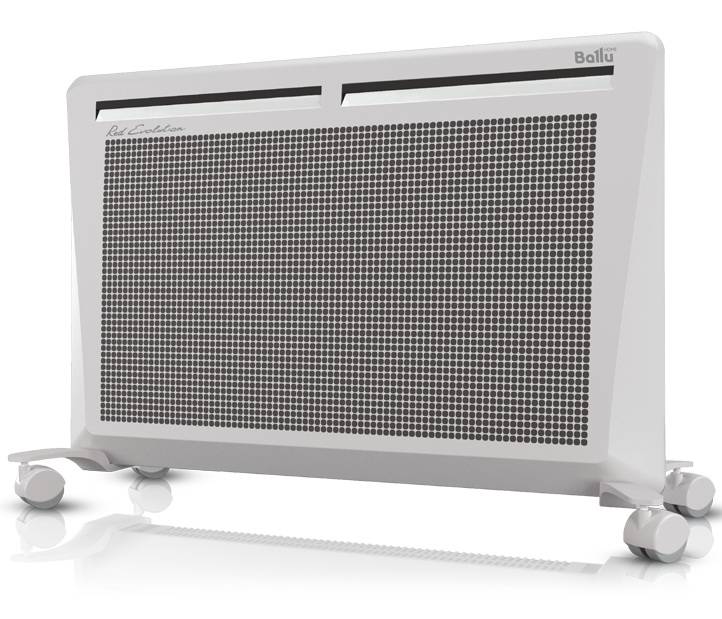

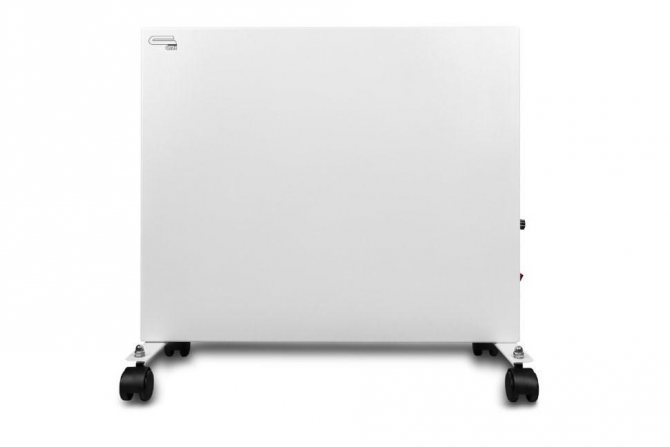

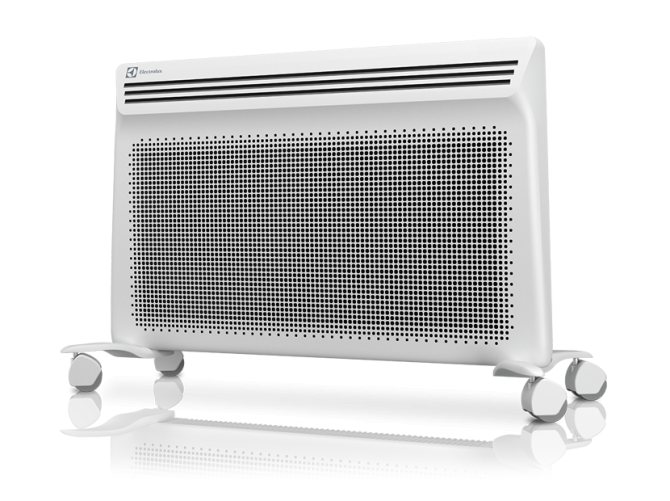





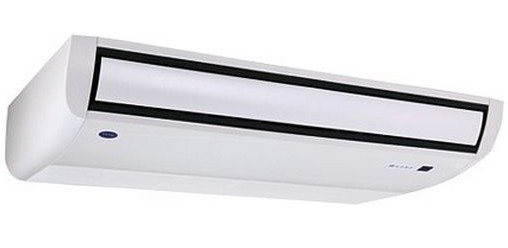

These devices are attractively priced and offer optimum performance.
Which manufacturer and which type is better to choose: TOP-3
When choosing an infrared heater, several factors are taken into account. The main characteristic is power.
Calculation of the minimum required power
The calculation of the power of the device depends on the purpose of use. If the convector is used as the main one, this indicator is determined in the proportion of 1 kW per 10 m2.
For additional heating, select the minimum power. The best option is to buy a model with a thermostat, which eliminates the consumption of excess electricity.
Before determining the characteristics of the device, you need to find out such an indicator as power density - the amount of power that falls on each square meter of area.
The table shows the power density indicators depending on the type of room:
| Room type | Power density, W / m2 to reach temperature | ||
| 13 ° C | 16 ° C | 19 ° C | |
| With effective thermal insulation | 60 | 80 | 100 |
| Poor thermal insulation | 90 | 120 | 150 |
| Uninsulated | 200 | 230 | 260 |
| Semi-open | 230 | 280 | 330 |
The temperature indicated in the table has been selected taking into account the comfort of the user's feelings. With infrared heating, the air temperature is felt 4 degrees higher than it actually is.
Calculation example for a workshop 10 m long and 5 m wide with 3 m high ceilings. The room temperature is expected to be set to 16 degrees.
For a room with a low degree of insulation, the power density is 120 W / m2.The power is calculated as follows:
P = 50 m2 * 120 W / m2 = 6 kW.
To achieve this figure, you need several heaters.
Important! If the ceiling height is 3 m, there should be 1.3 kW for every 10 m2.
What else to consider when choosing a device?
When buying an infrared convector, take into account the method of fixing the device. Modern models are represented by floor, wall and ceiling structures. The choice depends on the interior of the room and the tasks of the equipment. it is preferable to purchase a ceiling model. In this case, the device does not take up useful space, and there are no obstacles between the heat source and the heating objects. Portable structures can be moved from room to room - they are installed on a tripod.
Among the additional options that may be useful to the user, there are:
- automatic temperature control - provided by a built-in thermostat;
- small models are often equipped with a limit switch that can shut off the device when it rolls over;
- many ceiling models are equipped with a remote control system.
By paying attention to these functions, you can choose an efficient and economical device.
3 best models
The most efficient and economical models include:
- GORENJE GH6211 GOR. The advantage of the device is a large heating area - up to 25 m2. The device costs 14,600 rubles.
- Electrolux EIH / AG2-1500E. With a power of 1.5 kW, it is able to quickly heat a room of 20 m2. The price of the device is 5200 rubles.
- BALLU BIHP / R-1000 RED Evolution. At a low cost (4100 rubles), the model is capable of heating a room of 15 m2.
These devices have an optimal price / quality ratio.
The cost
You can buy an infrared heater at a price of 500 to 25,000 rubles. The cost is influenced by the size of the structure, the presence of additional functions, power, method of attachment. For household needs, you can focus on the middle price category and such devices as Electrolux EIH / AG2-1500E, STN NEB-M-NSt 0.7, BALLU BIHP / R-1000 RED Evolution. - they are in the range of 3,000 - 7,000 rubles. Designer and multifunctional models will cost over 10,000 rubles.
Where to buy an infrared convector?
You can buy an IR heater in most major cities. Especially large selection in the capital and St. Petersburg.
In Moscow
Moscow retail chains are represented by the following companies:
- Shop 220 Volt". Located at 127015, Moscow, Butyrskaya street 86 B. Telephone - 8 (800) 333-9-220.
- Climatic. One of the pickup points is located at st. m. Izmailovskaya, pr-kt Izmailovsky, house 59. Telephone for communication.
- Federal online store "RUSKLIMAT". One of the stores is located at the address - Nakhimovskiy prospect, house number 24, Exhibition complex "Expostroy on Nakhimovskiy", pavilion number 3, 1st floor, sector B, shop number 449. You can order goods by calling 8 (495) 803-33-86.
These stores have a large assortment of quality infrared heaters.
In St. Petersburg
Popular shops of the cultural capital:
- Internet-shop of heating "ProTeplo". The address of the company is 194044, Russia, St. Petersburg, Chugunnaya, house 14, lit. K (entrance from Mendeleevskaya 5). Phones, 8 800 775-63-03.
- ... Located at the address - St. Petersburg, Troitsky prospect, 2. Phone for orders - 8 (812) 244-15-05.
- Online store "ObogrevSpb". Address - St. Petersburg, st. Yesenin, building 5-B, shopping center "Yarus", 2nd floor, section 46. Phone numbers for clients, 642-13-73.
The presented stores offer a large selection of infrared heaters of various prices.
You can choose and purchase a device for heating an apartment or a country house on your own, if you know the required characteristics of the equipment and features of operation. Better to buy a device with a thermostat.
Apr 21, 2018T C
Convective infrared
Thanks to the decision to bring together two different heaters, the device has become even more efficient.The principle of operation of a convection device is to heat the air. Air flows passing near the heater heat up and rise. A cyclical movement is created, where cold air descends, warm, becoming lighter, rises.
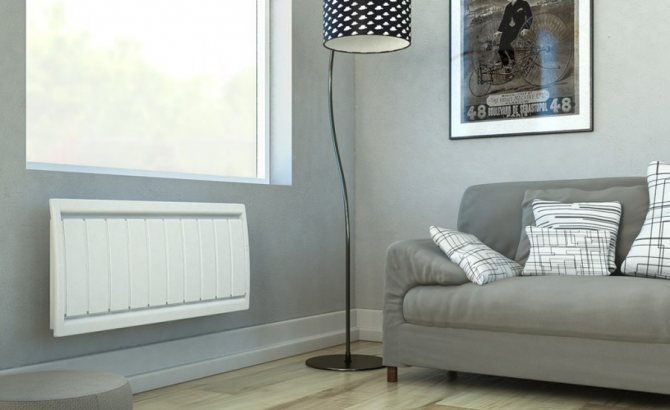

Convective infrared heater
The IR emitter heats objects. Gathering two devices together, it was possible to increase the efficiency, the air warms up faster.
How to choose a heater
Security
Before talking about the safety of heaters, it is worth noting that the power of the selected device (regardless of the type) must be compatible with the capabilities of the home electrical network. Too powerful a modern model can both knock out "plugs" and cause a fire in the wiring, especially if it has not been changed for a long time. Today the most popular four types of heaters on the market are oil, infrared, convector, and fan heaters.
If we talk about the best heaters in their types, then most of them are equipped with overheating protection. Nevertheless, it is quite easy to burn yourself with oil radiators, and if the apparatus is overturned, a fire is possible at all. In addition, it is not recommended to use such heaters for more than six hours in a row.
It is impossible to burn yourself with convector devices, just as it is difficult to provoke a fire. True, you can get an electric shock, but only with improper operation. However, the risk is no higher than when working with any other electrical appliance.
Until the end, there is no definite opinion regarding the safety of infrared heaters. Someone believes that the radiation they produce is not fully understood and can be dangerous, while others are sure that there is no risk. Be that as it may, you definitely do not need to worry about a fire, since the device itself does not heat up.
Pros, cons
Pros:
- Long service life, versatility.
- Minimal heat loss.
- Profitability.
- Security.
- Convenient design.
- Fast heating.


Convective IR device in the interior
Minuses:
- Burns oxygen.
- Cost.
When choosing a heater, you need to consider:
- area to be heated;
- the amount you have.
Saving on electrical appliances is unlikely to lead to a good result. The cheaper the device, the shorter the service life it has at its disposal. Quality can be limp.
Gavrilov Sergey
When choosing an infrared heater for home, I looked through many reviews. We weighed all the pros and cons and settled on Timberk. Disadvantages indicated in user opinions are usually design-related. This is mainly a knock when the unit is operating.
For me, the main criteria were: price, warm-up speed, economy, ease of use. The model meets all these conditions by 100%. Finding a quality analogue for the same price is unrealistic. Ceiling mount eliminates space and clutter on walls. In general, it is almost invisible. Heats up quickly. It is very warm in damp weather outside and in frost.
Infrared heaters of this type, according to experts, are one of the safest and most durable, can last for decades. The model is capable of heating medium-sized rooms. The power is regulated as needed. There is a shutdown system to prevent overheating. The manufacturer promises a moisture-resistant case, but I have not tested it. Disadvantage: the smell of burning was felt for three days.
(Timberk TCH A1N 1500)
Installation and use
Infrared convection heaters are available in two basic forms: floor-standing and wall-mounted. Depending on the type, their installation differs. The principle of use and operation does not change.
Floor-standing compact heaters are installed on legs equipped with casters. Such devices are easy to move or remove, they can be moved to another room. To install a floor-standing ICO, you only need a working socket and a space that is safe for other things.The use of tees or extension cords is not advisable, especially if the appliance is to be used at full capacity.
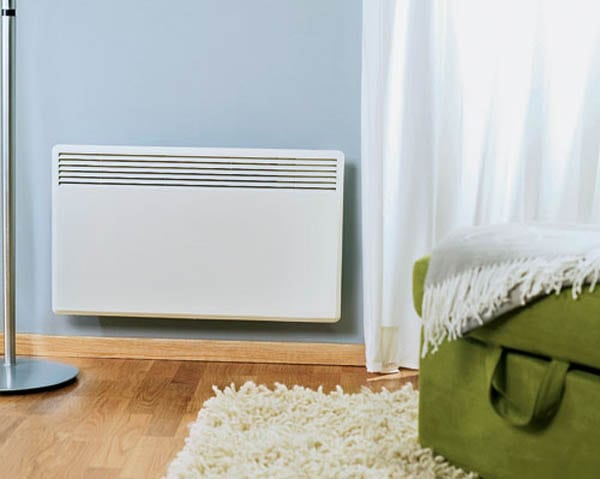

Wall heaters can be classified as stationary. No need to move or move them. They are mounted on the wall, for beauty they can be placed in a shallow niche (which does not interfere with air intake), the cord can be hidden, it is advisable not to remove the outlet far away so that the device can be easily turned off in case of a malfunction. The heater is hung on special hooks that are mounted on the wall.
Device and principle of operation
An infrared convector heater works on the principle of the sun: the rays emanating from the heater heat the surfaces that give off heat, thereby warming up the air. The convector allows air to pass through, heating it, and distributes warm currents throughout the room, contributing to the rapid warming up of the room. When the heater is in operation, both air and surfaces are warmed up. This allows you to heat the room in a short time.
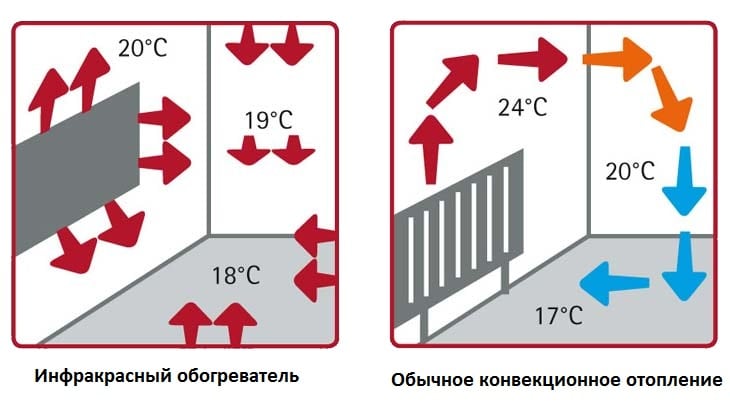

PPI radiation acts in a certain radiusto which the emitter is directed, so you need to carefully choose the location for its installation. It is best to keep people and surfaces within reach. In this case, the heat transfer will be maximum.
The convector's operation is safe both for people and animals, and for objects. But the heater needs supervision.
Drying clothes and other things on it or in the immediate vicinity of it is strictly prohibited. Also, radiation is contraindicated for people with certain medical conditions. The heating device is able to warm the house, save electricity and be safe to use.

